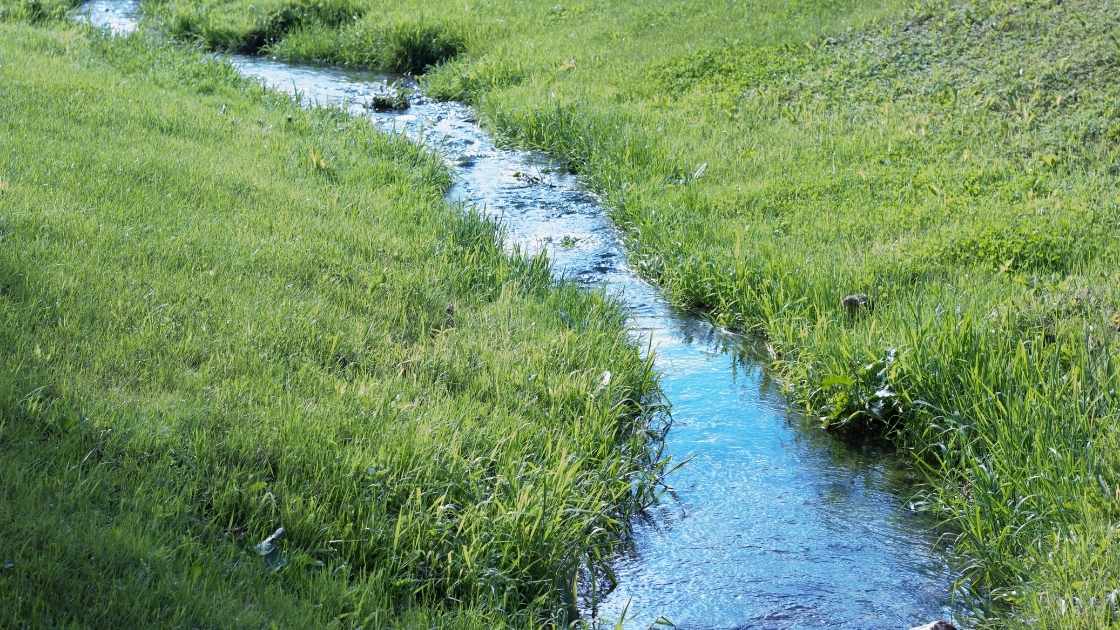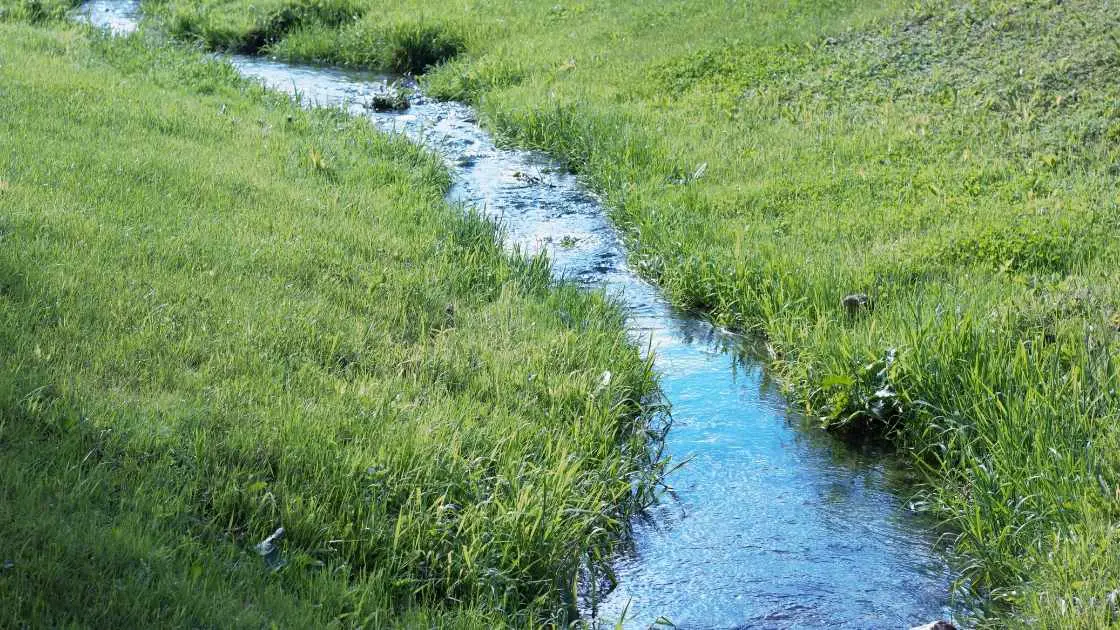If you’re a nature enthusiast or simply want to improve the environment around you, cleaning out a small creek can be a fulfilling and worthwhile endeavor. However, it’s important to approach this task with the right tools and techniques to ensure that you’re doing it safely and effectively.
In this guide, we’ll explore some tips and tricks for cleaning out a small creek. Whether you’re looking to remove debris or simply improve the water quality, we’ll provide you with the knowledge and resources you need to get started. So grab your gloves and let’s dive in!
If you want to clean out a small creek, follow these steps:
1. Wear protective gear, including gloves and boots.
2. Clear any debris, such as fallen branches or rocks, from the creek bed.
3. Use a rake or shovel to remove any excess sediment or mud.
4. Use a hose to flush out the remaining debris and sediment.
5. Dispose of any waste properly to avoid contamination of the creek.
Cleaning out a small creek can be a simple task if done carefully and properly.

How to Clean Out a Small Creek?
Cleaning out a small creek may seem like an overwhelming task, but with the right tools and techniques, it can be a manageable project. Whether you want to improve the health of the ecosystem or simply create a more visually appealing space, cleaning out a small creek can be a rewarding experience. Here are some tips on how to get started.
1. Assess the Creek
Before you begin cleaning out the creek, it’s important to assess the current state of the area. Take note of any debris, erosion, or other issues that need to be addressed. Also, consider the surrounding area and how it may affect the creek, such as nearby construction or potential pollution sources.
Once you have a good understanding of the creek’s current condition, you can start developing a plan for cleaning it out. This may involve removing debris, stabilizing the banks, or planting vegetation to improve the ecosystem.
2. Gather the Right Tools
To effectively clean out a small creek, you’ll need the right tools. This may include gloves, boots, shovels, rakes, and pruning shears. It’s also a good idea to have a wheelbarrow or other means of transporting debris out of the area.
If you’re planning on removing larger debris, such as fallen trees or large rocks, you may need additional equipment like a chainsaw or heavy-duty winch. Be sure to prioritize safety when using any equipment, and always wear protective gear.
3. Remove Debris
One of the most common issues in small creeks is debris buildup. Fallen leaves, sticks, and other organic matter can accumulate and create blockages that impede the flow of water. This can lead to flooding, erosion, and other problems.
To remove debris, start by using a rake or other tool to clear the surface of the water. Then, use a shovel or other implement to remove any debris from the bottom of the creek. Be sure to dispose of debris in a responsible manner, such as composting or recycling when possible.
4. Stabilize Banks
Another common issue in small creeks is bank erosion. This can be caused by a variety of factors, including high water flow, poor soil quality, and human activity. To stabilize banks, consider planting vegetation like grasses, shrubs, or trees.
In addition to stabilizing the banks, planting vegetation can also improve the health of the ecosystem. Plants help filter pollutants, provide habitat for wildlife, and create a more visually appealing space.
5. Control Erosion
If the creek is experiencing significant erosion, you may need to take additional measures to control it. This may involve installing retaining walls, rock features, or other structures to prevent further erosion.
It’s important to consider the long-term effects of any erosion control measures. For example, retaining walls may cause water to pool in certain areas and lead to other issues. Be sure to consult with a professional if you’re unsure of the best approach.
6. Check for Pollution
Small creeks are often susceptible to pollution from nearby sources. This may include runoff from roads, agricultural areas, or other human activities. To ensure the health of the ecosystem, it’s important to regularly check for pollution and take steps to mitigate it.
This may involve installing a filtration system, planting vegetation to absorb pollutants, or working with local officials to address pollution sources in the area. By taking proactive measures to prevent pollution, you can help ensure the long-term health of the creek.
7. Consider Fish and Wildlife
Small creeks are often home to a variety of fish and wildlife. When cleaning out the creek, it’s important to consider their needs and habitat. This may involve creating shelter areas, planting vegetation for food sources, or installing structures like rock caves for fish to hide in.
By considering the needs of fish and wildlife, you can create a more vibrant and healthy ecosystem. This can also make the area more enjoyable for human visitors, as they’ll be able to observe and interact with the local wildlife.
8. Maintain the Creek
Cleaning out a small creek is just the first step in maintaining a healthy ecosystem. To ensure the long-term health of the area, it’s important to regularly monitor and maintain it. This may involve removing debris, planting additional vegetation, or addressing any erosion or pollution issues that arise.
Regular maintenance can help keep the creek healthy and thriving for years to come. It can also make it a more enjoyable space for human visitors to relax and enjoy nature.
9. Benefits of Cleaning Out a Small Creek
Cleaning out a small creek can have a variety of benefits. It can improve the health of the ecosystem and provide habitat for local fish and wildlife. It can also create a more visually appealing space for human visitors to enjoy.
In addition, cleaning out a small creek can help prevent flooding and erosion, which can lead to costly repairs and property damage. By taking proactive measures to maintain the creek, you can help ensure the long-term health of the area and prevent these issues from arising.
10. Vs. Hiring a Professional
While cleaning out a small creek is a manageable project for many homeowners, it may be necessary to hire a professional in some cases. This may be true if the creek is experiencing significant erosion or pollution issues, or if you’re unsure of the best approach.
Hiring a professional can ensure that the job is done safely and effectively. They’ll have the expertise and equipment necessary to address any issues that arise. Additionally, hiring a professional can save you time and effort, allowing you to enjoy the benefits of a clean and healthy creek without the hassle of doing it yourself.
Frequently Asked Questions
In this section, you will find answers to the most common questions about how to clean out a small creek. Whether you are a homeowner or a professional, these tips will help you to keep your creek clean and healthy.
What tools do I need to clean out a small creek?
Cleaning out a small creek requires some basic tools such as a rake, a shovel, a pair of gloves, and a wheelbarrow. You may also need a pruning saw or a chainsaw to remove overhanging branches or fallen trees. When choosing your tools, make sure they are sturdy and durable enough to handle the job.
Before you start cleaning, it is also important to check for any local regulations or permits that may be required for creek maintenance in your area. You may need to apply for a permit or consult with a professional before you begin.
How often should I clean out my small creek?
The frequency of cleaning your small creek depends on several factors such as the size of the creek, the amount of debris it collects, and the weather conditions in your area. As a general rule, it is recommended to clean your creek at least once a year. However, if your creek is prone to flooding or heavy runoff, you may need to clean it more frequently.
Regular maintenance of your creek not only keeps it looking tidy but also prevents debris buildup that can cause blockages and impact the water flow. A well-maintained creek also promotes healthy aquatic life and reduces the risk of erosion and flooding.
How do I remove debris from my small creek?
Removing debris from your small creek can be a challenging task, especially if the debris has accumulated over a long period. Start by walking along the creek and identifying any large debris such as fallen trees or rocks that may need to be removed with heavy equipment or professional help.
Next, use a rake or a shovel to remove smaller debris such as leaves, twigs, and branches. If the debris is too heavy to lift, consider using a wheelbarrow or a tarp to transport it to a designated disposal area. Make sure to dispose of the debris responsibly and according to local regulations.
How do I prevent debris buildup in my small creek?
Preventing debris buildup in your small creek requires consistent maintenance and proactive measures. Start by identifying potential sources of debris such as overhanging trees or nearby construction sites. Trim any overhanging branches and clear any construction debris before they enter your creek.
You can also install sediment traps or erosion control structures to prevent sediment and debris from entering your creek. Regularly inspect and maintain these structures to ensure they are functioning properly. Lastly, educate your neighbors and community members about the importance of maintaining a clean and healthy creek.
What are the benefits of cleaning out my small creek?
Cleaning out your small creek has several benefits such as improving water quality, promoting healthy aquatic life, preventing erosion and flooding, and enhancing the aesthetic value of your property. A well-maintained creek also adds value to your property and creates a pleasant environment for outdoor activities such as fishing, hiking, and bird watching.
Cleaning out your creek also demonstrates your commitment to environmental stewardship and community engagement. By taking care of your small creek, you contribute to the health and beauty of your local ecosystem and inspire others to do the same.
Brougham Creek – Restoration
In conclusion, cleaning out a small creek can be a rewarding and beneficial task for both the environment and the community. By removing trash and debris, you can help improve the water quality and prevent harm to wildlife.
Remember to always take safety precautions and wear appropriate gear when cleaning a creek. It’s also important to dispose of the waste properly and follow any regulations or guidelines set by local authorities.
So, grab some friends or family members and head out to your local creek for a day of cleaning and making a positive impact on your community. Your efforts will not only benefit the environment but also inspire others to take action and care for our planet.

